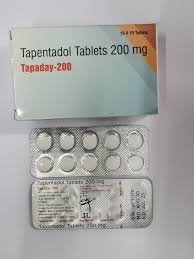What is the Recommended Dosage for Tapentadol 200 mg Tablets?
The recommended dosage for Tapentadol 200 mg tablets typically varies depending on the individual's medical condition, pain severity, and response to the medication. It is crucial to follow the prescribing healthcare provider's instructions closely to ensure optimal safety and effectiveness when taking Tapentadol.

Introduction
Tapentadol is a powerful analgesic used to treat moderate to severe pain. It belongs to the opioid class but has a unique dual mechanism of action, making it effective for both nociceptive and neuropathic pain. This article provides detailed insights into the recommended dosage of Tapentadol 200 mg tablets, usage guidelines, precautions, and more.
Understanding Tapentadol 200 mg
Tapentadol is available in different formulations, including immediate-release (IR) and extended-release (ER) tablets. The Tapentadol 200 mg variant typically refers to the extended-release formulation, designed to provide prolonged pain relief.
Recommended Dosage for Tapentadol 200 mg Tablets
The recommended dosage varies based on factors such as age, medical condition, severity of pain, and patient response to treatment. Below is a detailed breakdown:
1. Standard Dosage for Adults
-
Extended-Release (ER) Tablets: The usual starting dose for chronic pain is 50 mg to 100 mg every 12 hours. The dose can be titrated up to 200 mg twice daily based on pain control and tolerability.
-
Maximum Daily Dose: The maximum recommended dose is 500 mg per day to minimize the risk of adverse effects.
2. Dosage for Specific Conditions
-
Acute Pain: For short-term pain management, Tapentadol IR tablets (50 mg to 100 mg every 4-6 hours) are typically recommended instead of 200 mg ER tablets.
-
Chronic Pain: The ER formulation is preferred for ongoing pain relief, starting at 50 mg to 100 mg twice daily and increasing as needed.
-
Neuropathic Pain: In conditions like diabetic neuropathy, ER formulations are often prescribed at 100 mg twice daily, adjustable up to 250 mg twice daily under strict supervision.
3. Dosage Adjustments for Special Populations
-
Elderly Patients (Above 65 Years): The starting dose should be lower due to decreased metabolism and increased sensitivity.
-
Patients with Liver Impairment: Those with moderate hepatic impairment should receive a lower dose, while Tapentadol is not recommended for severe liver dysfunction.
-
Patients with Kidney Impairment: No significant dosage adjustments are required for mild to moderate impairment, but caution is advised.
Administration Guidelines
-
Swallow the tablet whole with a glass of water; do not crush, chew, or split.
-
Take the medication with or without food, preferably at the same time each day.
-
If a dose is missed, take it as soon as possible. However, if it's close to the next scheduled dose, skip the missed one.
Safety Precautions and Warnings
-
Risk of Addiction and Dependence: Tapentadol is an opioid, carrying the potential for abuse and addiction.
-
Respiratory Depression: High doses can cause severe breathing difficulties, particularly in elderly or compromised patients.
-
CNS Depression: Combining Tapentadol with alcohol or other CNS depressants (like benzodiazepines) increases the risk of drowsiness and sedation.
-
Serotonin Syndrome: Avoid using Tapentadol with SSRIs, SNRIs, or other serotonergic drugs.
-
Withdrawal Symptoms: Do not abruptly stop taking Tapentadol; taper off gradually under medical supervision.
Potential Side Effects
Like any medication, Tapentadol 200 mg may cause side effects. Common and severe reactions include:
Common Side Effects
-
Dizziness
-
Drowsiness
-
Nausea
-
Vomiting
-
Constipation
Severe Side Effects (Seek Immediate Medical Attention)
-
Difficulty breathing
-
Seizures
-
Hallucinations
-
Severe allergic reactions
Drug Interactions
Tapentadol can interact with several medications, including:
-
CNS depressants (e.g., alcohol, sedatives, muscle relaxants)
-
Serotonergic drugs (e.g., SSRIs, SNRIs, MAO inhibitors)
-
Other opioids (e.g., morphine, oxycodone)
-
Anticholinergic drugs (e.g., antihistamines, tricyclic antidepressants)
Alternatives to Tapentadol 200 mg
If Tapentadol is not suitable, alternatives may include:
-
Other Opioids: Oxycodone, Morphine, Hydromorphone
-
Non-Opioid Analgesics: Acetaminophen, NSAIDs
-
Neuropathic Pain Medications: Gabapentin, Pregabalin
Conclusion
Tapentadol 200 mg tablets are an effective option for managing chronic pain when used responsibly. Patients should adhere to the prescribed dosage, monitor for side effects, and avoid potential drug interactions. Always consult a healthcare provider before initiating or adjusting the dose to ensure safe and effective pain management.
What's Your Reaction?













